Thoughts on Generative AI
August 31, 2023
Introduction
A new generation of image-creation tools, powered by generative AI, are enjoying wild popularity and success. The output is amazing, and the tools are improving every day.
As an artist and developer in this field, I’d like to share my thoughts on generative AI and its role in our apps and my company’s future.
Background
I’ve been working on “creative filters” for over a decade, and I’ve incorporated AI into my work since the start. I would venture to say that my generative painting software, Painty, was the first to use a form of neural network.
My most popular software, Waterlogue (released in 2013), doesn’t use AI but can still capture the essence of watercolor painting with uncanny accuracy.
The current crop of generative AI tools requires a lot of training data—where does this come from? Much of it is harvested en masse without creators’ knowledge or consent, whether photographers or illustrators. While it may be legal, I don’t think it’s ethical. When I see people generating art “in the style of…” I am sympathetic to the artists being exploited. I’m not going to make tools that do that to people.
My Process
My background is in art & design: I went to Pratt, an art school, and only after college did I begin programming. I was less interested in using traditional art-making tools and wanted to create my own. And for the past 20+ years, I’ve used computer graphics to explore art and vision. Each of my apps (Percolator, Waterlogue, Cinemin, etc.) focuses on some visual or aesthetic principles grounded in the human visual system and backed by thousands of years of art tradition:
For Waterlogue, it’s a well-known concept in traditional watercolor painting called “lost & found edges,” the use of the “white of the page” to capture crisp detail, and observing that texture and natural patterns create visual interest.
For Olli and Cinemin, it’s learning that a traditional illustration technique of using lines and large areas of shading is enough to convey the most important visual information and then discovering the algorithmic equivalent. Think: the lines and shading of black & white comic book illustration.
Here’s a musical analogy: In sheet music, the bass line captures structure and rhythm, while the treble line captures the melody. Similarly, my method splits visual information into “structure” and “detail” layers and then recombines them to create something new and harmonious.
Even Percolator—that quirky app that turns photos into circles—has a precedent: Mosaic art. But Percolator’s twist is that it doesn’t mosaic everything with the same level of detail. Like the human visual system, it puts the most importance where the most detail is: Small circles for detail, big circles for areas of no detail or visual interest. As Percolator converts images into circles, it “compresses” the image into an efficient, minimal representation of the original. (And, who doesn’t love circles!?)
Because each of my apps is grounded in real, demonstrable principles of art & design, I know that when my software creates images, people will react to them the same way they respond to other aesthetic experiences, whether traditional or created by new generative AI tools.
Conclusion
So, that’s where I’m coming from: I’m interested in learning how people see and how artists see, and creating tools and experiences that let anyone, whether they have years of training or innate talent, experience the joy and surprise of having whatever visual input is immediately on-hand, or in their phones, transformed into something special.
Generative AI is a great way to make a tool if you don’t know what you’re doing—dump in a million pictures and have the computer “figure it out,”—but figuring it out for myself is both fun and part of my art journey. I’ve been fortunate that Tinrocket’s unique apps are well-loved and have the support of its customers, allowing me to continue this exploration.
With the surge in new visual tools based on generative AI, I hope my approach is a positive differentiator. Looking ahead, I will keep searching for ways to incorporate AI techniques in future products, but only tools and techniques that elevate art and creators.
Thanks for reading!
John Balestrieri
Founder, Tinrocket
A new generation of image-creation tools, powered by generative AI, are enjoying wild popularity and success. The output is amazing, and the tools are improving every day.
As an artist and developer in this field, I’d like to share my thoughts on generative AI and its role in our apps and my company’s future.
Background
I’ve been working on “creative filters” for over a decade, and I’ve incorporated AI into my work since the start. I would venture to say that my generative painting software, Painty, was the first to use a form of neural network.
My most popular software, Waterlogue (released in 2013), doesn’t use AI but can still capture the essence of watercolor painting with uncanny accuracy.
The current crop of generative AI tools requires a lot of training data—where does this come from? Much of it is harvested en masse without creators’ knowledge or consent, whether photographers or illustrators. While it may be legal, I don’t think it’s ethical. When I see people generating art “in the style of…” I am sympathetic to the artists being exploited. I’m not going to make tools that do that to people.
My Process
My background is in art & design: I went to Pratt, an art school, and only after college did I begin programming. I was less interested in using traditional art-making tools and wanted to create my own. And for the past 20+ years, I’ve used computer graphics to explore art and vision. Each of my apps (Percolator, Waterlogue, Cinemin, etc.) focuses on some visual or aesthetic principles grounded in the human visual system and backed by thousands of years of art tradition:
For Waterlogue, it’s a well-known concept in traditional watercolor painting called “lost & found edges,” the use of the “white of the page” to capture crisp detail, and observing that texture and natural patterns create visual interest.
For Olli and Cinemin, it’s learning that a traditional illustration technique of using lines and large areas of shading is enough to convey the most important visual information and then discovering the algorithmic equivalent. Think: the lines and shading of black & white comic book illustration.
Here’s a musical analogy: In sheet music, the bass line captures structure and rhythm, while the treble line captures the melody. Similarly, my method splits visual information into “structure” and “detail” layers and then recombines them to create something new and harmonious.
Even Percolator—that quirky app that turns photos into circles—has a precedent: Mosaic art. But Percolator’s twist is that it doesn’t mosaic everything with the same level of detail. Like the human visual system, it puts the most importance where the most detail is: Small circles for detail, big circles for areas of no detail or visual interest. As Percolator converts images into circles, it “compresses” the image into an efficient, minimal representation of the original. (And, who doesn’t love circles!?)
Because each of my apps is grounded in real, demonstrable principles of art & design, I know that when my software creates images, people will react to them the same way they respond to other aesthetic experiences, whether traditional or created by new generative AI tools.
Conclusion
So, that’s where I’m coming from: I’m interested in learning how people see and how artists see, and creating tools and experiences that let anyone, whether they have years of training or innate talent, experience the joy and surprise of having whatever visual input is immediately on-hand, or in their phones, transformed into something special.
Generative AI is a great way to make a tool if you don’t know what you’re doing—dump in a million pictures and have the computer “figure it out,”—but figuring it out for myself is both fun and part of my art journey. I’ve been fortunate that Tinrocket’s unique apps are well-loved and have the support of its customers, allowing me to continue this exploration.
With the surge in new visual tools based on generative AI, I hope my approach is a positive differentiator. Looking ahead, I will keep searching for ways to incorporate AI techniques in future products, but only tools and techniques that elevate art and creators.
Thanks for reading!
John Balestrieri
Founder, Tinrocket
Stay Updated
Copyright © 2024 Tinrocket, LLC. Cinemin, Olli, This by Tinrocket, Percolator, the Percolator mark, Start Here, SMAWL, and Popsicolor are trademarks of Tinrocket, LLC. ‘Create Something Beautiful,’ ‘Tools for Seeing,’ ‘Creativity at Your Fingertips,’ ‘Your portable watercolor camera,’ ‘Get drawn in’, ‘Capture your imagination,’ ‘Your pix, brewed perfectly,’ ‘Tell the whole story,’ ‘Make your photos pop,’ ‘Grab your audience before they scroll away,’ and ‘Convert, Replace, and Save Space’ are trademarks of Tinrocket, LLC. ‘See the world like an artist’, Tinrocket, Waterlogue, and the Waterlogue mark are registered trademarks of Tinrocket, LLC. App Store is a service mark of Apple Inc.


